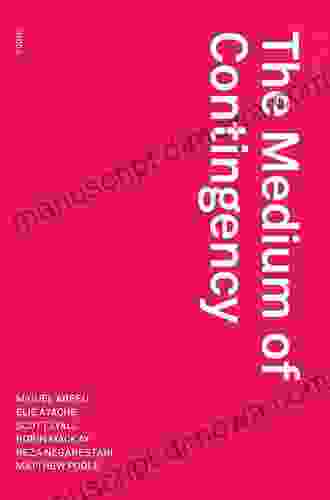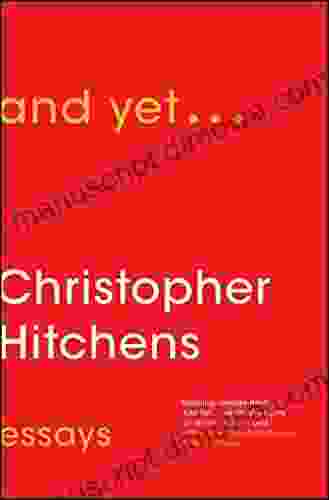Unveiling the Enigma of Negative Bias Temperature Instability in PMOS: A Comprehensive Exploration

Negative bias temperature instability (NBTI) is a critical reliability concern in modern p-type metal-oxide-semiconductor (PMOS) transistors. It leads to the degradation of the device's threshold voltage (Vth) over time, which can severely impact circuit performance and reliability. Understanding the mechanisms responsible for NBTI and developing effective mitigation strategies is of paramount importance for the semiconductor industry.
4.5 out of 5
| Language | : | English |
| File size | : | 86520 KB |
| Text-to-Speech | : | Enabled |
| Screen Reader | : | Supported |
| Enhanced typesetting | : | Enabled |
| Word Wise | : | Enabled |
| Print length | : | 557 pages |
Mechanisms of NBTI
NBTI is a complex phenomenon that involves several interacting mechanisms. The primary mechanism is the generation of interface traps at the Si/SiO2 interface due to the breaking of Si-H bonds by hot carriers. These interface traps act as charge trapping sites, which results in a positive shift in Vth. Other mechanisms contributing to NBTI include:
- Hydrogen release from the gate oxide
- Charge trapping in the gate oxide
- Electromigration of metal ions
- Time-dependent dielectric breakdown (TDDB)
Factors Affecting NBTI
The rate of NBTI degradation is influenced by several factors, including:
- Gate bias voltage
- Temperature
- Stress time
- Device geometry
- Gate oxide thickness
- Dopant concentration
NBTI is accelerated at high gate bias voltages and temperatures. It is also more pronounced in devices with thin gate oxides and high dopant concentrations.
Consequences of NBTI
NBTI can have significant consequences for the performance and reliability of PMOS transistors and integrated circuits (ICs). The degradation of Vth can lead to increased leakage current, reduced drive current, and decreased circuit speed. In severe cases, NBTI can cause device failure.
Mitigation Strategies
Several strategies can be employed to mitigate NBTI, including:
- Using thicker gate oxides
- Reducing the dopant concentration
- Optimizing the device geometry
- Using alternative gate dielectrics with higher stability
- Applying stress annealing techniques
Recent Advances in NBTI Research
Significant research efforts are dedicated to understanding the mechanisms of NBTI and developing effective mitigation strategies. Recent advances in NBTI research include:
- Identification of new degradation mechanisms
- Development of improved measurement techniques
- Proposal of new mitigation strategies
- Exploration of emerging materials for gate dielectrics
Negative bias temperature instability (NBTI) remains a critical reliability concern in PMOS transistors. Understanding the mechanisms of NBTI and developing effective mitigation strategies are essential for the design and fabrication of reliable semiconductor devices and ICs. Ongoing research efforts are continuously pushing the boundaries of NBTI knowledge and providing innovative solutions to address this challenge.
References
- B. Kaczer et al., "Negative bias temperature instability: A critical review," Journal of Physics D: Applied Physics, vol. 49, no. 22, p. 223001, 2016.
- S. Mahapatra, "Recent progress in understanding and mitigation of NBTI," Applied Physics Reviews, vol. 6, no. 2, p. 021308, 2019.
- K. Kang et al., "Emerging materials for negative bias temperature instability (NBTI) mitigation," ACS Nano, vol. 13, no. 10, pp. 11933-11949, 2019.
4.5 out of 5
| Language | : | English |
| File size | : | 86520 KB |
| Text-to-Speech | : | Enabled |
| Screen Reader | : | Supported |
| Enhanced typesetting | : | Enabled |
| Word Wise | : | Enabled |
| Print length | : | 557 pages |
Do you want to contribute by writing guest posts on this blog?
Please contact us and send us a resume of previous articles that you have written.
 Book
Book Novel
Novel Page
Page Chapter
Chapter Text
Text Story
Story Genre
Genre Reader
Reader Library
Library Paperback
Paperback E-book
E-book Magazine
Magazine Newspaper
Newspaper Paragraph
Paragraph Sentence
Sentence Bookmark
Bookmark Shelf
Shelf Glossary
Glossary Bibliography
Bibliography Foreword
Foreword Preface
Preface Synopsis
Synopsis Annotation
Annotation Footnote
Footnote Manuscript
Manuscript Scroll
Scroll Codex
Codex Tome
Tome Bestseller
Bestseller Classics
Classics Library card
Library card Narrative
Narrative Biography
Biography Autobiography
Autobiography Memoir
Memoir Reference
Reference Encyclopedia
Encyclopedia Jamie Bowlby Whiting
Jamie Bowlby Whiting Charlsie Foust Allen
Charlsie Foust Allen Miguel Estrada
Miguel Estrada Christine Manzari
Christine Manzari Christopher Golden
Christopher Golden Rodney Hartman
Rodney Hartman Chas Webb
Chas Webb Christopher D Hudson
Christopher D Hudson Charnan Simon
Charnan Simon Christian Sardet
Christian Sardet Christopher G Moore
Christopher G Moore Christopher G Nuttall
Christopher G Nuttall Michelle Deerwester Dalrymple
Michelle Deerwester Dalrymple Christina Soontornvat
Christina Soontornvat Christine Delsol
Christine Delsol Chris Thorogood
Chris Thorogood Peter Walsh
Peter Walsh Christina Drechsel
Christina Drechsel Colin Irwin
Colin Irwin Greg Chappell
Greg Chappell
Light bulbAdvertise smarter! Our strategic ad space ensures maximum exposure. Reserve your spot today!
 Preston SimmonsFollow ·7.7k
Preston SimmonsFollow ·7.7k Eugene PowellFollow ·14.7k
Eugene PowellFollow ·14.7k Marcus BellFollow ·18.7k
Marcus BellFollow ·18.7k Ruben CoxFollow ·7.8k
Ruben CoxFollow ·7.8k Garrett BellFollow ·17.9k
Garrett BellFollow ·17.9k George Bernard ShawFollow ·9k
George Bernard ShawFollow ·9k E.M. ForsterFollow ·10.6k
E.M. ForsterFollow ·10.6k Luke BlairFollow ·3.5k
Luke BlairFollow ·3.5k

 Frank Mitchell
Frank MitchellStep Onto the Dance Floor of Spanish Fluency with...
Are you ready to take a...

 Jarrett Blair
Jarrett BlairEscape into the Enchanting Realm of "The British Empire...
Embark on an Extraordinary Literary Journey...

 Gregory Woods
Gregory WoodsHitler Olympics: The 1936 Berlin Olympic Games
The 1936 Berlin Olympic Games...

 Philip Bell
Philip BellThe British Empire of Magic and the Dark Knights King: An...
In the tapestry of literary...

 Jacob Hayes
Jacob HayesPerilous Journey of Danger and Mayhem: A Thrilling...
In the untamed wilderness,...
4.5 out of 5
| Language | : | English |
| File size | : | 86520 KB |
| Text-to-Speech | : | Enabled |
| Screen Reader | : | Supported |
| Enhanced typesetting | : | Enabled |
| Word Wise | : | Enabled |
| Print length | : | 557 pages |













